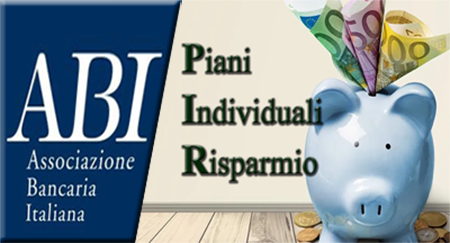New investment thresholds for savers who choose Pir, the Individual Savings Plans. The new ABI infographic created in collaboration with the banks and consumer associations participating in the Trasparenza Semplice project is dedicated to the main features and innovations of the PIRs. As part of the initiative that provides, among other things, the dissemination of information and educational tools on topics of interest to customers, to facilitate the use of banking and financial information, the infographic was developed with the aim of supporting citizens in understanding this important form of medium-long term investment, designed in particular to support small and medium-sized enterprises.
Created to favor the financial strengthening of the Italian entrepreneurial fabric, PIRs represent a form of savings investment in support of the productive sectors and the growth of the economy, allowing investors to access important tax benefits. The discipline has been updated several times to encourage more and more the use of this tool. What are PIRs, who are they reserved for, what forms do they take, such as tax benefits: in simple language, the infographic illustrates its current formulation.
The infographic is in digital format and is available online on the ABI website in the dedicated page (this is the link). Due to its wider dissemination, this new information and educational tool aimed at customers is already available to the banks and consumer associations that have collaborated in the initiative (ACU, Adiconsum, Adoc, Altroconsumo, Asso-Consum, Assoutenti, Casa del Consumer, Consumer Protection Center for Users, Cittadinanzattiva, Codacons, Confconsumatori, Federconsumatori, Consumer League, Consumer Movement, Citizen Defense Movement, U.Di.Con, UNC).
Here, in summary, the main contents of the infographic:
Who the Pir are reserved for
Individuals fiscally resident in Italy who do not hold more than one PIR at the same time and do not share it with other individuals can invest in PIRs.
What forms they take
PIRs can invest in various financial instruments (investment fund units, shares, bonds and even bank current accounts), as long as the requirements laid down by the legislation in the composition of portfolios, within the investment limits and holding times are respected. PIRs can take different forms: they can be proposed and managed by asset management companies (asset management companies); they can also be of an insurance nature; they can be included in the assets under administration.
The necessary requirements to take advantage of the tax benefits
With the latest innovations introduced by the 2022 Budget Law, which have raised the limits, the investment must not exceed 40.000 euros per year and 200.000 euros overall. Furthermore, no more than 10% of the portfolio may be invested in instruments issued by the same issuer; at least 70% of the total investment must be allocated to “qualified” financial instruments, ie issued by Italian (or European companies with a permanent establishment in Italy). Of this 70%, at least 25% must be invested in financial instruments of companies other than those present in the FTSEMib index of Borsa Italiana or equivalent indices (i.e. other than the highly liquid Italian companies that are included in this share index or equivalent) ; a further 5% must be invested in financial instruments of companies other than those present in the FTSEMib and FTSEMid Cap index of Borsa Italiana (or equivalent indices of other regulated markets), therefore in small and very small companies. The instruments must be held for a minimum of 5 years.
The tax benefit
It consists of the exemption from taxes on financial income generated by the investment (generally taxed at 12,5% or 26%) and from inheritance taxes on the investment, without specific restrictions related to the age of the plan holder.
The alternative PIRs
Introduced in 2020, they were designed to direct private savings towards small and medium-sized unlisted companies particularly exposed to the consequences of the Covid-19 pandemic. They can be held by the same saver in addition to a traditional Pir; they are financial products with higher investment thresholds and investment constraints different from traditional ones, with which they have in common the tax exemption on financial returns (provided that the investment is maintained for at least 5 years). As regards the thresholds, it is possible to invest up to € 300.000 each year in alternative PIRs until the ceiling of € 1,5 million is reached. Among the innovations introduced, the possibility of being holders of several alternative PIRs, always in compliance with the annual investment ceiling of € 300.000 and the overall ceiling of € 1,5 million. Furthermore, the 2022 Budget Law modified the tax credit regulations for capital losses realized in alternative PIRs, reshaping the amount and the usability term, extending the possibility of transforming them into tax credit also with regard to the investments made. in the course of 2022, for a maximum amount of 10% of the total amount invested in the Pir and the possibility of using it in 15 annual installments of the same amount.
As for all forms of investment, also for PIRs it is necessary to evaluate the investment objectives and the overall composition of the investment portfolio together with the consultant or manager, choosing the one most in line with one's financial profile and time horizon.
